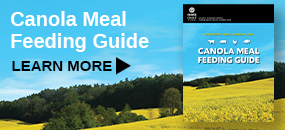

October 2013
When it comes to formulating dairy rations, variability of feed ingredients must always be considered. The goal of developing specific rations is always to meet the nutritional needs of the animal in the most efficient and profitable way possible.
Even when nutritionists and dairymen develop the perfect ration for an operation on paper, there are still variables that can take a toll on the effectiveness of the ration. While less variable than forages, all by-product protein feed sources are subject to some level of variability due to ingredient source, processing and differences in formulation models. Luckily, there are methods nutritionists and dairymen can use to ensure they are meeting the needs of their herds in the most efficient way possible.
The models available to nutritionists are, in general terms, reasonably accurate predictors of nutrient requirements. Accurate information concerning ingredient composition is fundamental to applying the model appropriately. Some steps that can be taken include:
Analyzing incoming ingredients to the extent practical. Ingredients with low variability require fewer analyses than ones that are highly variable.
“All feed sources, including soybean meal and DDGS, are subject to variability due to ingredient source and processing,” says Dr. Essi Evans, dairy nutritionist and president of Essi Evans Technical Advisory Services. “Because of this, nutritionists must take advantage of these formulation models in order to build consistent rations.”
Tools are available to allow formulators to take into account ingredient variability in ration formulation. Such tools provide the formulator with the ability to reduce safety margins set for nutrient requirements, and to use and make better use of the ingredients available for ration balancing.


